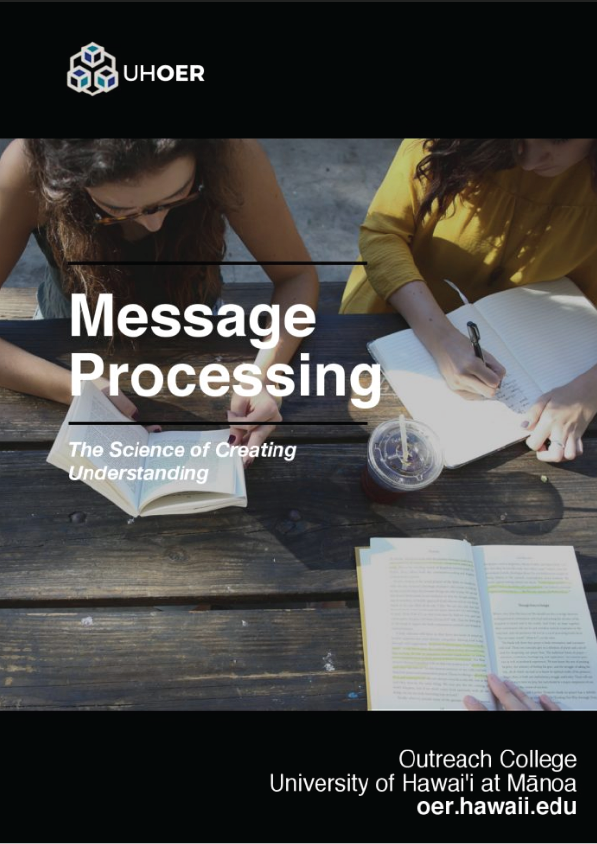This chapter introduces key concepts in the study of human communication. It begins by summarizing contemporary definitions of communication, highlighting common themes as well as their shortcomings for studying understanding. It then introduces a “message processing” definition of communication, which conceptualizes communication as a process of creating shared mental states between two minds. The balance of the chapter introduces and defines related concepts that will be useful to the study of message processing.
Before diving into past and present scientific models of human communication, it is important to take a step back and spend some time discussing and defining the concepts and ideas used in those models. Just as you might lay out your tools and materials before starting a project (e.g., assembling a piece of furniture, baking a cake, repairing an engine), this chapter aims to lay out foundational concepts in the study of human communication before we get into the details of how it works. Many communication textbooks treat these concepts as primitive terms (i.e., terms that do not need to be defined, because they are widely understood). However—as subsequent discussions of message processing will make clear—this is potentially problematic, as it can lead to ambiguity in what exactly is intended when a term is used. This, in turn, can lead to misunderstandings and/or a lack of precision in theorizing and thinking about important questions.
COMMUNICATION
Perhaps the most central term of all to the study of message processing is communication. The word “communicate” has its origins in the Latin word “communicare”, which means to “share” or “make common”. (This is the same word root as words like “community” or “common”). Thus, etymologically, when we communicate, what we are doing is making the content of our thoughts common between us. Although we have deliberately defined the term message processing without using the term “communication”, the study of message processing essentially consists of examining how “making our thoughts common” occurs, and what happens during this process.
People have been studying human communication for literally thousands of years. As both (meta)theoretical thinking and research methods have evolved over time, the way people have approached this area has also undergone changes. In the following sections, will look at the ways in which contemporary (i.e., 20th and 21st century) communication scholars have traditionally defined human communication. After considering some of the shortcomings of these definitions for the study of message processing, we propose an alternative definition of communication that better suits those purposes. In addition to this new definition, we will also introduce several other key concepts that will help us study how people create understanding in social interaction.
Message Processing Definition of Communication
For our purposes—studying how people create mutual understanding in social interaction—we need a definition of communication that addresses what the process of communication involves, and that explains how people share the content of their minds with others via messages. To meet these needs, we propose the following definition: Communication is the process by which people observe and exhibit social stimuli in order to activate, create, or ascertain meme states in other people, with the goal of creating isomorphic meme states between themselves. We will now look at each part of this definition.
This definition begins by describing communication as a process—that is, something that is ongoing and unfolds over time through a series of related actions (McCornack, 2010; West & Turner, 2014). This is consistent with traditional definitions of communication above. The next part of the definition describes the activities involved in communication: people observe and exhibit social stimuli. Stating that people both observe and exhibit emphasizes that process of communication involves both input (taking in; sensing or perceiving) and output (casting; displaying or presenting) by the parties involved.











